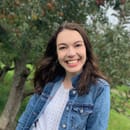Violent crimes have become normalized in today’s society. We hear of deaths and are saddened by them, but quickly move on. It is not even halfway through 2019, and the news has been filled with stories of mass shootings, casualties and violent acts against religious groups. We mourn the deaths of the victims who have died senselessly; we discuss our outrage of acts of violence; we hold prayer ceremonies — but that isn’t enough.
Eleven died in Pittsburgh, 49 in New Zealand, one in San Diego and three severely injured. In 2019, 4,500 who have died from gun violence, 110 people in mass shootings. Two hundred are children who have been injured or killed. We think about them, but do we know them?
Is it well known that two victims of the Pittsburgh shooting were brothers? Cecil Rosenthal and David Rosenthal. Or that two other victims were a husband and wife, Bernice and Sylvan Simon? Does the name Mucad Ibrahim ring a bell? The three-year-old boy shot and killed in the New Zealand mosque attack after being separated from his brother and father amidst the chaos. Do we know who Lori Gilbert-Kaye is? The kind, generous, brave, 60-year-old mother who jumped in front of a bullet to save the life of Yisroel Goldstein, the Rabbi of San Diego synagogue, Chabad of Poway.
Real people’s lives have been affected. Real people were shot. They had stories to tell. Places to go. Their whole lives in front of them … ended.
In the most recent shooting in San Diego, the shooter was 19.
Nineteen.
The age of a college freshman or sophomore.
Not old enough to drink.
Not old enough to rent a car.
Not old enough to fly a plane.
Yet, old enough to buy a gun.
Nineteen-year-old, white male, John Earnest bought an AR-type rifle and opened fire on a synagogue in the suburb of San Diego on the last day of Passover. Earnest was devoted to going to Church and was attending nursing school, however in his free time, he was also chatting in racist online forums about his admiration for Hitler and other white supremacist terrorists.
Earnest wanted to get caught; he was proud of his actions — proud to have killed a loving mother, injured two Israelis and shot both hands of the Rabbi. He wanted the world to know what he had done.
Much like John Earnest, the New Zealand shooter, Brenton Harrison Tarrant, wanted the world to see and hear his actions. The media allowed him to live stream the violent deaths of 49 mosque worshippers. He took inspiration from the Pittsburgh synagogue shooting, previous white nationalist rants, and the words of online peers indoctrinating him to go and kill.
The acts of religious hatred in Pittsburgh, New Zealand and San Diego are fresh on our mind, but do we still remember Texas? South Carolina? Wisconsin?
In 2017, 26 people were killed and 20 injured in a church located in Sutherland Springs, Texas during Sunday service. In 2015, nine people died in South Carolina’s historic Black church, Emanuel African Methodist Episcopal Church. In 2012, an attack on a Sikh temple in Oak Creek, Wisconsin killed six and wounded three during service.
“Everybody expects that a house of worship is a safe place,” said Willi Glee, a member of Emanuel AME Church, in a NY Times article. It has become clear that no one is safe, especially those of marginalized identities.
Maybe there is no truth about religious shootings.
Maybe there are only questions left for us to decipher.
So, I ask of you:
How many people have to die before we change our gun laws?
How do we end this senseless violence?
What will it take to make this hatred stop?


